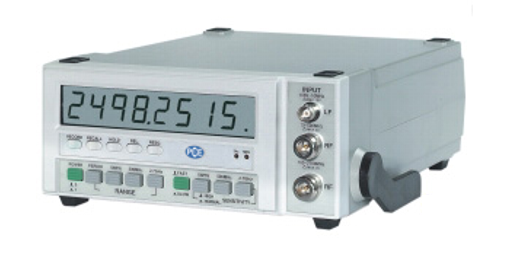frequency meter
Frequency counters or frequency meters are electronic measuring devices for determining frequency. Their range of application extends from low frequencies in the infrasound range to very high frequencies in the microwave range. Functionally, frequency meters can be integrated in universal counters or also in RF measuring instruments.
Important distinguishing features of frequency meters are their precision and accuracy, measurement stability, long-term constancy and the resolution of the digital display.
Most electronic frequency meters are based on counting the oscillations that arrive in a defined, precise time window. This principle is called the counting principle. The time window is generated by a precise oscillator. Depending on the accuracy class of the frequency counter, it can be a crystal oscillator, a voltage controlled oscillator, VCO, or a temperature compensated oscillator, TCXO, which have much higher frequency stabilities compared to crystal osc illators. The better the frequency accuracy and stability of the oscillators, the better the corresponding values of the frequency counter.
If a sinusoidal frequency is applied to the input of the frequency counter, it is transformed into square pulses with more precise rising and falling edges. The rising edges arriving during the time window are counted and put in relation to the duration of the time window and from this the frequency of the input signal is calculated. For example, if the time window is 1 millisecond (ms) and 34,567 pulses are counted during this time window, then the frequency is 34.567 MHz. If the resolution is not sufficient and the time reference is very stable, then the time window can be increased by one or more powers of ten. For example, with a 10-ms time window, 345,678 pulses would arrive, the frequency resolution would increase by one power of ten to 34.5678 kHz, and with a 100-ms time window, it would increase by another. The longer the time window, the more accurate the measurement result.
This principle can also be reversed. In this case, the time window is triggered by the period duration and counts highly accurate clock signals generated by a quartz oscillator during the period duration. The frequency is determined from the relation of clock pulses to the period duration. In addition to the counting principle described above, there are other frequency measurement methods that are based on the resonance principle or calculate the frequency from the wavelength.

